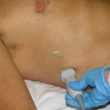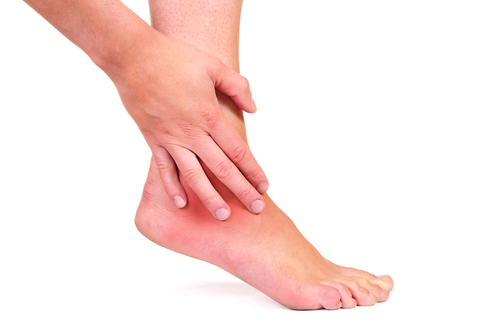Foot tendonitis is a condition wherein the tendons of the foot become inflamed. Tendons are inelastic but flexible tough bands of collagen that connect muscles to bones. Like mostly the case, there’s pain where there’s inflammation. This is the reason why foot tendonitis could cause you to hit the brakes on carrying out a lot of your daily physical activities.
Causes
Any injury to the tendons may result in tendonitis. Inflammation is actually a normal body reaction to help commence and accelerate the healing of an injured area. Blood pools in the affected body part to supply it with extra amounts of oxygen and nutrients for recovery, as well as white blood cells to fight off bacteria and ward off an infection.
Foot tendonitis may also happen due to the overuse of the tendons situated in the foot. Any body part of yours that you abuse is likely to end up painful, warm, red and swollen — some very clear indicators that it has reached its breaking point. In the case of foot tendonitis, the tendons end up inflamed due to working too hard or being stretched excessively.
Having an abnormal anatomical structure of the foot may also lead to the painful condition. Whether you are flat-footed or your feet have really high arches, you are prone to having foot tendonitis due to the great strain that the tendons in the areas have to undergo on a daily basis as you walk, run, dance, play basketball and do other activities that involve the feet.
Certain medical conditions may cause foot tendonitis too, most especially the kinds that involve inflammation. Some good examples include rheumatoid arthritis and gout.
Signs and Symptoms
Foot tendonitis comes with a handful of signs and symptoms. Naturally, there’s pain in the affected foot. This pain tends to worsen when the foot with tendonitis is moved. According to those who suffer from the condition, the pain tends to be sharp or burning in nature. Initially, it is localized to the site of the affected tendon, but tends to spread wider as the problem worsens.
After a few days of experiencing pain in the affected area of the foot, swelling appears. The swollen area, as expected, is painful when touched. It also feels warm and appears red. Stiffness is also another symptom, something which restricts movement of the affected foot.
Remedies
The intake of non-steroidal anti-inflammatory drugs (NSAIDs) is commonly prescribed by doctors to help relieve both pain and inflammation associated with tendonitis. There are also a bunch of home remedies you may try in case you wake up one day having a bout of foot tendonitis. Here are some of the most effective ones:
- Ice the area to reduce pain and swelling. One of the simplest home remedies for foot tendonitis is applying ice on the affected area for about 20 minutes. Make sure that you wrap your ice cubes in a small towel and not place them directly on the skin of the affected foot.
- Massage the affected foot with olive oil. This home remedy helps improve blood flow to the area, hastening the repair and healing of the injured or overused tendon. It’s a good idea to warm olive oil a little in the microwave for it to really work wonders.
- Immerse your foot in warm water with Epsom salt. An easy way to ease the pain and swelling in the foot is by soaking it in a basin of warm water mixed with a couple of tablespoons of Epsom salt. Do it for 15 minutes daily until the symptoms of foot tendonitis go away.
- Place vinegar wraps on the swollen foot. You need a couple of bowls to perform this home remedy. Bowl #1 should contain equal amounts of vinegar and water, heated up a bit. Bowl #2 should contain equal parts of vinegar and water, chilled in the fridge. Get a small towel, soak it in bowl #1, wring out the excess and place on the foot for 10 minutes. Soak it in bowl B2, wring out the excess and apply on the foot with tendonitis for another 10 minutes. Repeat everything 3 times.
- Put fresh cabbage leaves on the foot. Soak some fresh cabbage leaves in a bowl of water for about half an hour. Afterwards, place them over the swollen area of the foot. Secure in place with elastic bandage. It’s a good idea to do this just before you hit the sack.
- Soak your foot in warm water with cayenne pepper. Fill a small basin with warm water and dump about a tablespoon of cayenne pepper in it. Immerse your inflamed and achy foot in it for about 15 minutes. Capsaicin that makes cayenne pepper really hot is known as a powerful pain reliever.












